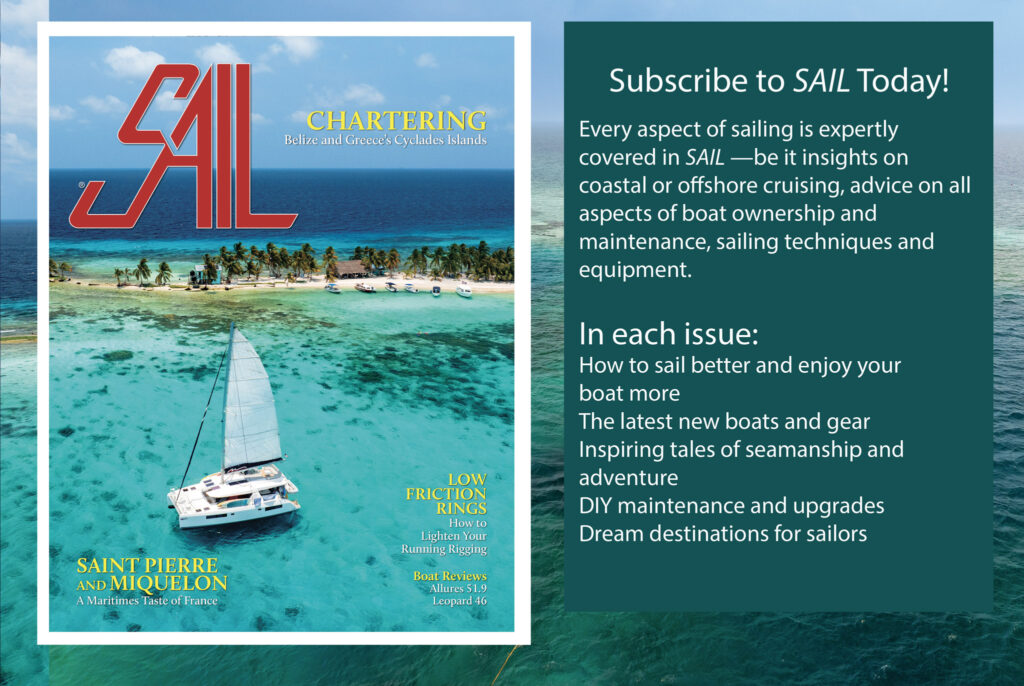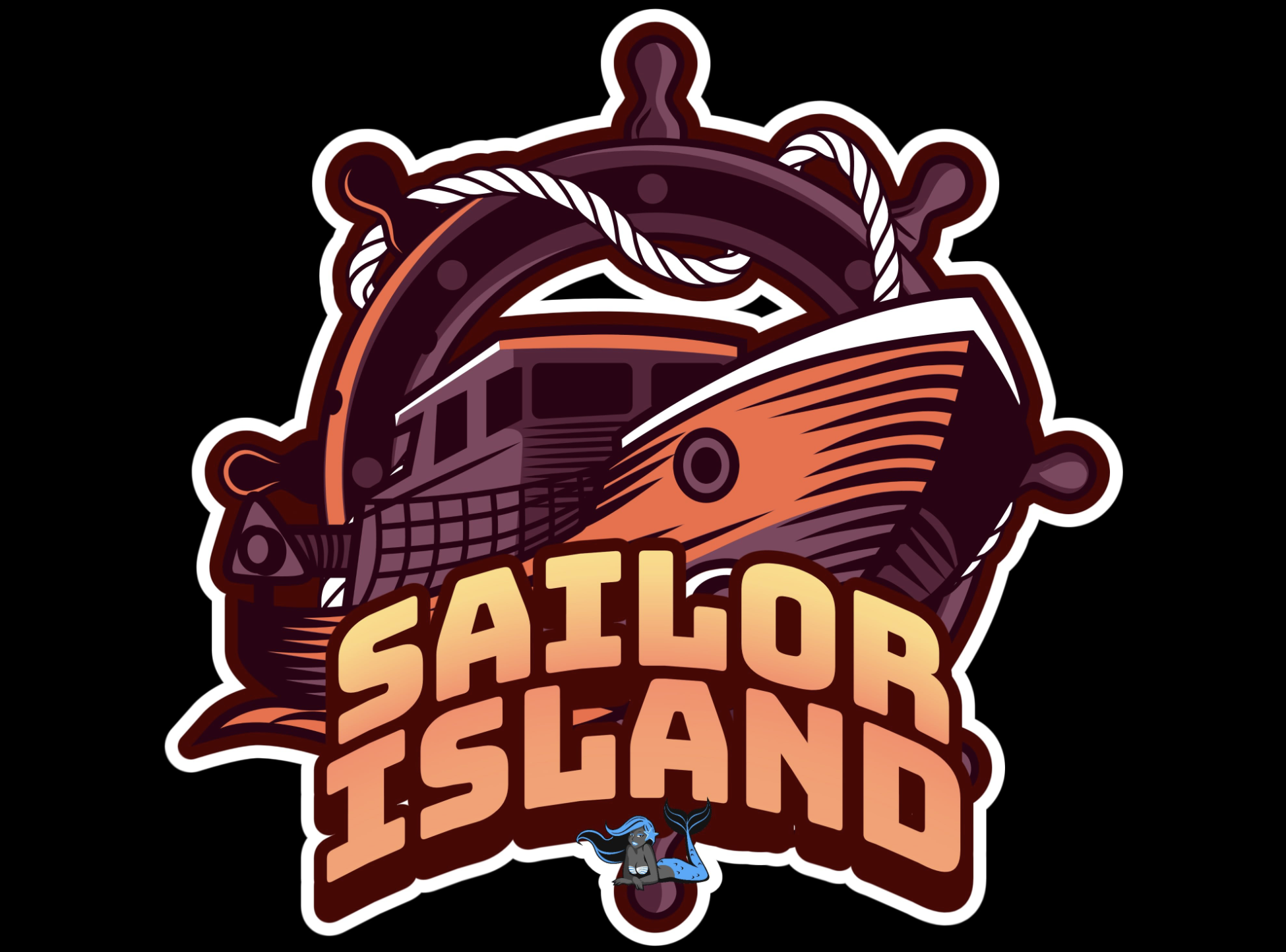With more than 1,100 hulls launched, the Lagoon 42 was a tough act to follow. In designing its successor, Lagoon Catamarans knew they had to hit it out of the park, so they tossed tradition, took risks, and stretched comfort zones. If the long lines waiting to see the boat at its debut at the Annapolis Sailboat Show last fall are any indication, they’ve succeeded in reinvigorating people’s perceptions and excitement about this model.

Designer Patrick Le Quément once again teamed with the naval architects of VPLP, and the collaboration has resulted in multiple changes throughout. The designers moved the rig forward, which places the compression post toward the windows and out of the middle of the salon. Gone is the track for a self-tacking jib, replaced by more traditional headsail sheeting. The mast is 2 feet shorter (65 feet, 5 inches) but the boom is longer, increasing the sail area of the square-top mainsail by 100 square feet over the predecessor. Since cats derive most of their power from their large mains, the reduced foretriangle isn’t likely to impact overall performance.
The designers have given several areas on deck special attention. The new transom seat with its twin hinging backrests is a fun hangout. You can face forward into the cockpit or aft over the anchorage. Netting has been integrated into the davit bar forming an aft trampoline when the davit is lowered and the dinghy is launched. It would be my favorite place for some morning contemplation over a coffee.
Side boarding doors are carved into the aft hull sections on either side. These doors aren’t the first of their kind, but they come in handy. Not only do they eliminate odd hops from the dock onto the swim platform when boarding, they make loading provisions from the dock or dinghy easier.

Next up are changes on the foredeck where the Lagoon 43 borrowed the U-shaped lounge from the Lagoon 46. Seating wraps around the windlass pedestal over a deep footwell for comfort. If there’s no room left on the seats, you can slip onto one of the tempting trampolines. The starboard one is larger because the longeron isn’t on the centerline, making the foredeck asymmetrical—the same as on the 42. The window between the galley and this forward cockpit now opens to easily pass food and drinks. When swinging to anchor at happy hour in easterly trades, this shady spot will be a go-to alternative to baking in the aft cockpit.
Another new feature is the “semi-fly” or coachroof lounge that replaces the previous simple sunpad. U-shaped seating plus a sunbed form a gathering spot that has direct contact with the helmsman so everyone can be together under way. Unlike a full flybridge, this solution lowers the center of gravity and keeps the helm protected behind the port bulkhead. One drawback to this much furniture up top is limited space for solar panels. That said, you can tuck in four for 640 watts around the traveler and its Harken Flatwinder winch.
The cockpit was reconceived to create a seamless transition between the inside and the outside. When open, the three-panel glass door vanishes into casings on either side and connects multiple tables along the starboard settee. Add a coffee table in one section and a dining table in the other or combine three tables to accommodate up to 12 in a banquet-style layout with moveable benches and poofs adding inboard seating. This makes an uninterrupted flow designed for large group entertaining.

Inside, the galley has migrated to the forward port corner with two sinks, two refrigerator drawers, and a 152-quart, front-opening fridge. Lagoon maximized stowage options throughout, even adding a sliding cupboard to capture the dead space behind that tall refrigerator. An Eno stovetop with four inline burners makes good use of the narrow outboard countertop, and a UV filtration system is standard so you can drink tank water and minimize the use of plastic bottles. The vessel management center is in the forward starboard corner with a Raymarine VHF, a Fusion stereo, the AC and DC panels, and a popup TV.
We found more changes at the cabin level. In the port hull, the beds in the fore and aft cabins are the same size thanks to extra volume forward created by the significant hull chine. Second, the heads are identical, each with its own shower stall. Typically, the forward head is truncated due to lack of room, but to save space, the sinks were relocated into the showers and now hinge up and outboard to make the stalls larger when in use. Lastly, a pullman berth drops down from the inboard bulkhead of the aft cabin. With a lee cloth, this makes room for kids sharing the cabin with their parents, or it’s a great shelf to stow luggage and clothing.
The star of the show is the owner’s cabin in the starboard hull where Lagoon flipped the script on traditional catamaran layout. The bed is forward, benefitting from better air circulation via an unobstructed overhead hatch and less noise from the engine, dock, and cockpit. This leaves the wider part of the hull aft to the enormous head with its massive shower stall, ample vanity, and an enclosed separate toilet. There’s even room for a sliding rather than a hinging door to separate the head from the rest of the cabin. A long desk forms a home office in the middle, and distance cruisers and liveaboards will appreciate the many stowage cubbies, drawers, and hanging lockers.

After inspecting all the clever thinking at the dock, we headed out for a sail. On our test boat, the upgraded Elvstrom square-top main added 732 square feet to the sailplan. In ideal conditions with 14-17 knots over the flat water of Chesapeake Bay, we sailed 7.7 knots of speed in 16 knots of true wind at 65 degrees apparent wind angle (AWA). Even when we hardened up to 50 degrees AWA we held onto 6.3 knots of speed. Without a Code 0 to play with, we dropped to 5.1 knots on a broad reach sailing on just the jib and main. Lagoon offers in-boom furling, but my preference would be the simplicity and reliability of a conventional sail bag.
Twin 57-hp Yanmar diesels with saildrives are standard and the only propulsion package available. We cruised at 7.1 knots at 2,200 rpm and found the top speed at 8.7 knots at 3,200 rpm. Fuel tankage has been nearly doubled from 79 to 150 gallons, so traveling longer distances with greater autonomy is possible. For those wishing to ditch the genset, Lagoon offers the “Silent Package” that includes lithium batteries, upsized engine alternators, a large inverter, and solar panels.
The Lagoon 43 isn’t just a hull revision or an interior facelift. It’s a bold change to onboard flow and an optimized use of space. Time will tell if private owners and charterers will embrace all or just some of the changes, but 55 units had already sold by last October. Kudos to Lagoon for not resting on their laurels but rather taking risks and pushing themselves as well as their customers out of their respective comfort zones.
LOA 45’ 5”
Beam 25’ 3”
Draft 4’ 5”
Displacement 29,363 lbs (light)
Sail Area 1,130 sq ft (upwind)

Trending Products
[product_category category=”trending” per_page=”8″ columns=”2″ orderby=”date” order=”desc”].
